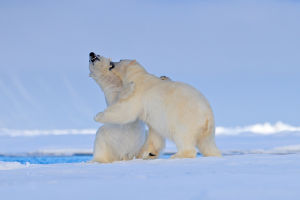Camels are not commonly seen in our daily lives, but they are frequently encountered in the desert, appearing as peculiar creatures with long necks and characteristic humps. It is said that they have a particular fondness for eating prickly pear cacti.
According to scientific research, when fully fed and watered, a healthy adult camel can endure 15-30 days without eating or drinking. If provided with food lacking in water, a camel can persist for about 2-3 weeks, while with only water, it can survive for over a month.
This endurance surpasses that of humans, who typically survive only about three days without food or water and even less so in desert conditions where survival might be measured in hours rather than days. What accounts for the camel's remarkable ability to withstand hunger and thirst?
As large mammals, Camels come in two main varieties: the dromedary, or single-humped camel, and the Bactrian, or double-humped camel. Double-humped camels tend to be larger, with adult dromedaries averaging around 450 kilograms and adult Bactrians around 600 kilograms.
Their size naturally dictates their intake; under normal circumstances, camels can consume about 13 kilograms of dry fodder and drink about 10 liters of water in a single sitting. In extreme situations, such as returning from the desert, a camel with depleted humps can consume at least 30 kilograms of food and drink up to 120 liters of water in one go.
In normal conditions, camels consume and retain far more food and water than their bodies require, effectively storing reserves, as indicated by their full and erect humps. This excess intake serves as a foundation for the camel's future endurance.
The plump humps of camels function akin to a full tank of gas in a car. When food and water become scarce in the desert, camels draw upon these fat reserves for energy and hydration.
The camel's ability to retain water is also reflected in its red blood cells. Unlike humans' disk-shaped red blood cells, camel red blood cells are oval-shaped. Research shows a 600-kilogram camel can drink 200 liters of water in just 3 minutes.
To put this in perspective, if a standard bottle of mineral water is 550 milliliters, 200 liters would be roughly equivalent to 364 bottles. One might wonder if consuming such vast quantities of water would cause the cells to burst. However, the unique oval shape of camel red blood cells allows them to expand to 2.7 times their original size without rupturing.
These adaptations allow camels to remain healthy even when dehydrated by 25%, whereas humans face death when dehydrated by only 12%-14%. Additionally, camels can convert fat into water at a 1:1 ratio in extreme conditions (although in the absence of food, fat is primarily converted into energy).
Because of these remarkable storage capabilities for energy and water, camels can survive for weeks or even months without eating in extreme environments.
Even today, if we venture into regions like the Gobi or Sahara Desert, we can still encounter herds of camels. However, it's important to note that these camels are not wild. Among the existing camel populations, the only wild variety is the wild Bactrian camel, and according to statistics from 2002, their numbers are dwindling, with fewer than 800 remaining, classifying them as critically endangered.
Protecting the natural habitat of wild animals and preserving biodiversity is a shared responsibility. Let us work together to safeguard the wonders of nature, ensuring that future generations can also appreciate the existence of these miraculous creatures like camels.


